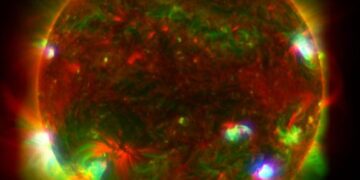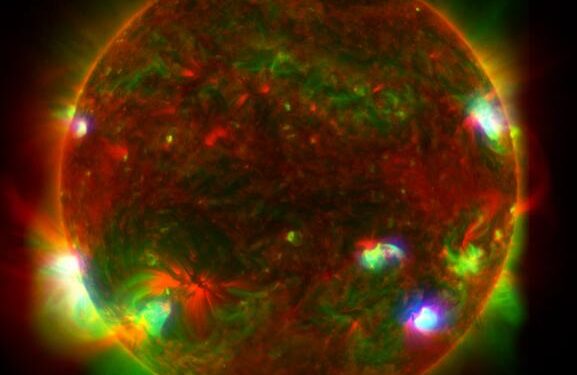As we step into a new year, a captivating look back at three years of solar activity recorded by the ESA-led Solar Orbiter mission has enthralled both scientists and the public. With breathtaking images, innovative sonifications, and groundbreaking data, this mission reveals the dynamic and fiery nature of our star, the Sun.
Unveiling the Solar Orbiter’s Journey
The Solar Orbiter is no ordinary space mission. Launched in 2020 as a collaboration between the European Space Agency (ESA) and NASA, it has revolutionized our understanding of the Sun. Traveling on an elliptical orbit, the spacecraft ventures closer to the Sun every six months, capturing unprecedented data. Over the past three years, it has provided a treasure trove of insights into the Sun’s outer atmosphere, known as the corona, and the energetic solar flares that erupt from it.
The mission’s hallmark lies in its dual focus: stunning ultraviolet imagery and precise X-ray measurements. The Extreme Ultraviolet Imager (EUI) captures the Sun’s corona in exquisite detail, while the Spectrometer/Telescope for Imaging X-rays (STIX) pinpoints solar flares with unmatched accuracy. Together, these instruments offer a comprehensive view of the Sun’s activity, marking the mission as a cornerstone of modern solar science.
The Rise of Solar Activity: A Glimpse at the Solar Cycle
Solar activity follows an 11-year cycle, swinging between periods of minimal and maximum activity. As the Sun approaches its solar maximum—a phase characterized by heightened solar flare intensity—the Solar Orbiter has been at the frontline of documenting this dramatic transformation.
Over three years, the number and intensity of solar flares have surged, as depicted in the Solar Orbiter’s data. This increase is a clear indicator of the Sun ramping up its activity, with twisted magnetic fields above sunspots releasing bursts of high-energy radiation. The Solar Orbiter’s meticulous recordings provide a visual and auditory timeline of this growth, allowing scientists to predict the peak of the cycle and prepare for its potential impacts on Earth.
Science Meets Art: Turning Solar Flares Into Sound
One of the most fascinating aspects of the Solar Orbiter’s data presentation is the innovative use of sonification. Created by Klaus Nielsen, this auditory representation transforms solar flare data into a symphony of sounds. The video released by ESA combines these sounds with ultraviolet images of the Sun, creating an immersive experience.
Each metallic clink in the sonification represents a solar flare, with the sound’s sharpness corresponding to the flare’s energy. Meanwhile, a humming background reflects the spacecraft’s changing distance from the Sun. This blend of science and art not only enhances public engagement but also provides scientists with a novel way to interpret complex data.
Key Discoveries Over the Past Three Years
The Solar Orbiter has not just documented solar flares; it has unveiled critical insights into the Sun’s behavior:
- Tracking Magnetic Fields: The mission has mapped the intricate dance of magnetic fields, shedding light on the mechanics of solar flares.
- Understanding Solar Wind: By studying the corona and solar wind, scientists are piecing together the puzzle of how the Sun’s energy impacts space weather.
- Spotting Rare Patterns: High-resolution imagery and precise measurements have revealed unexpected flare patterns, prompting new questions about solar dynamics.
Why Solar Activity Matters to Us
While the Sun’s fiery eruptions may seem distant, their effects reach far beyond its blazing surface. Solar flares release high-energy radiation that can interfere with satellite communications, disrupt GPS systems, and even pose risks to astronauts in space. By understanding the Sun’s behavior during its solar cycle, scientists can develop better strategies to mitigate these impacts.
The Future of Solar Exploration
The Solar Orbiter’s journey is far from over. As the Sun continues its climb toward solar maximum, the spacecraft will remain a critical tool for monitoring and understanding our star. The mission also sets the stage for future solar exploration, inspiring innovations in data collection and visualization.
Conclusion: A Fiery Celebration of Science
The Solar Orbiter has given us more than just data—it has offered a dynamic and vivid story of our Sun’s journey through its solar cycle. By combining cutting-edge science with creative artistry, the mission has brought the Sun’s fiery personality to life, making solar science accessible and engaging for all.
Provided by The European Space Agency.



















